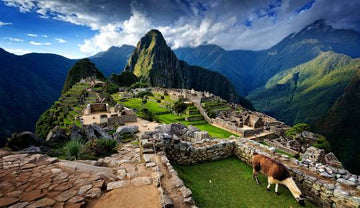Where is Peru?

Where is Peru?
Peru, officially the Republic of Peru, is a country in western South America. It is bordered in the north by Ecuador and Colombia, in the east by Brazil, in the southeast by Bolivia, in the south by Chile, and the south and west by the Pacific Ocean. Peru is a megadiverse country with habitats ranging from the arid plains of the Pacific coastal region in the west to the peaks of the Andes mountains extending from the north to the southeast of the country to the tropical Amazon basin rainforest in the east with the Amazon River.
Peru has a population of over 32 million, and its capital and largest city is Lima. At 1,285,216 km2 (496,225 sq mi), Peru is the 19th largest country in the world and the third largest in South America.
Peruvian territory was home to several cultures during the ancient and medieval periods. It has one of the longest histories of civilization of any country, tracing its heritage back to the 10th millennium BCE. Notable pre-colonial cultures and civilizations include the Caral-Supe civilization (the earliest civilization in the Americas and considered one of the cradles of civilization), the Nazca culture, the Wari and Tiwanaku empires, the Kingdom of Cusco, and the Inca Empire, the largest known state in the pre-Columbian Americas. The Spanish Empire conquered the region in the 16th century and Charles V established a viceroyalty with the official name of the Kingdom of Peru that encompassed most of its South American territories, with its capital in Lima.
Higher education started in the Americas with the official establishment of the National University of San Marcos in Lima in 1551.
In the ensuing years, the country first suffered from political instability until relative economic and political stability began due to the exploitation of guano that ended with the War of the Pacific (1879–1884). Throughout the 20th century, Peru grappled with political and social instability, including the internal conflict between the state and guerrilla groups, interspersed with periods of economic growth. Implementation of Plan Verde shifted Peru towards neoliberal economics under the authoritarian rule of Alberto Fujimori and Vladimiro Montesinos in the 1990s, with the former's political ideology of Fujimori leaving a lasting imprint on the country's governance that continues to the present day.
When did Coffee start in Peru?
Peru's coffee production began in the mid-1700s, earlier than many Central and South American nations. Most of the consumption remained domestic until the late 1800s when the Indonesian coffee industry was decimated by disease and European buyers started looking for alternative markets.
Quality of Peru Coffee
Peru coffee has gained fame as a high-quality, specialty coffee. Peru is now the second largest exporter of organic coffee beans after Mexico. Coffee produced there reaches markets in over 50 countries and has made a special name for itself - especially in the United States, Germany, and Belgium.
From citrus to chocolaty tasting, Peru's coffee is one of the most delicious and highly demanded goods in Latin America. Peruvian Coffee is slowly beginning to be recognized as one of the greatest coffee-growing regions in the world.25 Jan 2022
Is Coffee grown in Machu Picchu?
Huadquiña is a small cooperative that was discovered on some of the highest mountainsides where coffee grows in the remote town of Santa Teresa, in Cusco, Peru. Located in the Andean Mountains and close to the Inca site of Machu Picchu, their extreme altitude contributes towards producing excellent quality coffee.


